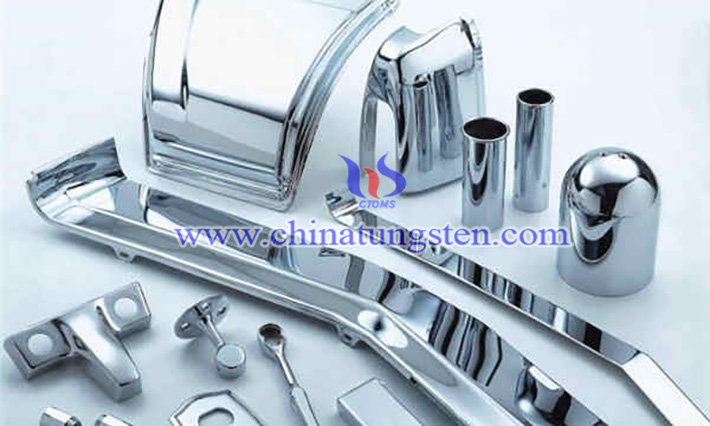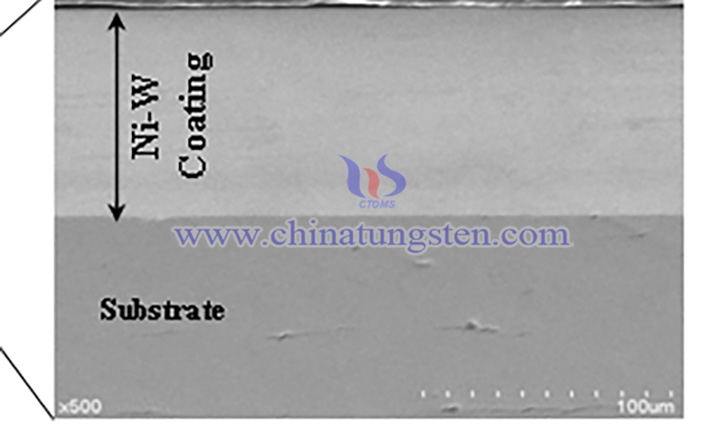Nickel-Tungsten Alloy Coatings to Substitute Chrome Coatings
- Details
- Category: Tungsten Information
- Published on Tuesday, 28 March 2023 21:53
A team of Indian scientists have developed a new method of deposition of Nickel-Tungsten alloy coatings on high-performance materials in engineering applications can replace environmentally toxic chrome coatings. The coatings obtained are also highly corrosion-resistant and useful for the plastic ware industry.
Chrome coating or plating is a finishing process that involves the application of chromium onto the surface of a metal workpiece or object. The newly formed chrome layer works to protect the underlying workpiece or object from corrosion while improving its aesthetics in the process. Chrome coatings have been used in the plastic bottling industry to improve the service life of die-casting components, but the process of chrome plating is toxic and must comply with stringent standards for permissible exposure limits for hexavalent chromium. Finding a procedure for adhering to this limit is a challenge for scientists.

The Government of India’s Department of Science and Technology (DST) announced earlier this week that researchers have developed a new technique to deposit Nickel-Tungsten alloy coatings on high-performance materials, with the hopes of replacing environmentally toxic chrome coatings. According to the report, the coatings obtained are also highly corrosion resistant. DST reports that the nano-crystalline coatings can also cater to the need for the replacement of hazardous chrome coatings.
Led by Dr. Nitin P. Wasekar, the research group from the Center for Engineered Coatings at the International Advanced Research Center for Powder Metallurgy & New Materials (ARCI) has developed a lab-scale process to deposit nanostructured nickel-tungsten alloy coatings using pulsed electroplating.
Compared to conventional, direct current used for chrome plating, the scientists utilized electric current in the form of pulses of duration of a few milliseconds for electroplating purposes.

The process reportedly consists of environmentally friendly electrolyte consisting of nickel and tungsten ions that is the source of strengthening elemental tungsten (W) and nickel (Ni). The pulsed current is applied between the components to be coated, acting as cathode and non-consumable anode.
The pulsed current effect was then used for nano-crystalline coatings, where high instantaneous current density for very small duration reportedly resulted in high rate of nucleation. DST reports that, unlike in conventional direct current plating, the coatings were virtually porosity free, crack free with minimal hydrogen uptake, and exhibited high hardness (700-1200 HV) and wear resistance.
The coating is reportedly extremely corrosion resistant, withstanding up to 700 hours of salt spray. It can also withstand temperatures up to 500 degrees Celsius (932 degrees Fahrenheit) without thermal softening, improving the life of die components by at least two times compared to conventional chrome plating.
The nickel-tungsten coatings were successfully applied to die-casting components used in plastic bottling industry, wherein the temperatures at the die interface can be over 280 °C . With numerous applications in automotive, defense, and aerospace for these coatings, the process know-how is ready for transfer as a replacement for conventional chrome plating.
Reference: https://dst.gov.in/new-technique-corrosion-resistant-nickel-alloy-coatings-can-replace-toxic-chrome-plating
- Tungsten Alloy Manufacturer & Supplier, Chinatungsten Online: www.tungsten-alloy.com
- Tungsten News & Prices of China Tungsten Industry Association: www.ctia.com.cn
- Molybdenum News & Price: news.molybdenum.com.cn
- Tel.: 86 592 5129696; Fax: 86 592 5129797; Email: sales@chinatungsten.com



 sales@chinatungsten.com
sales@chinatungsten.com